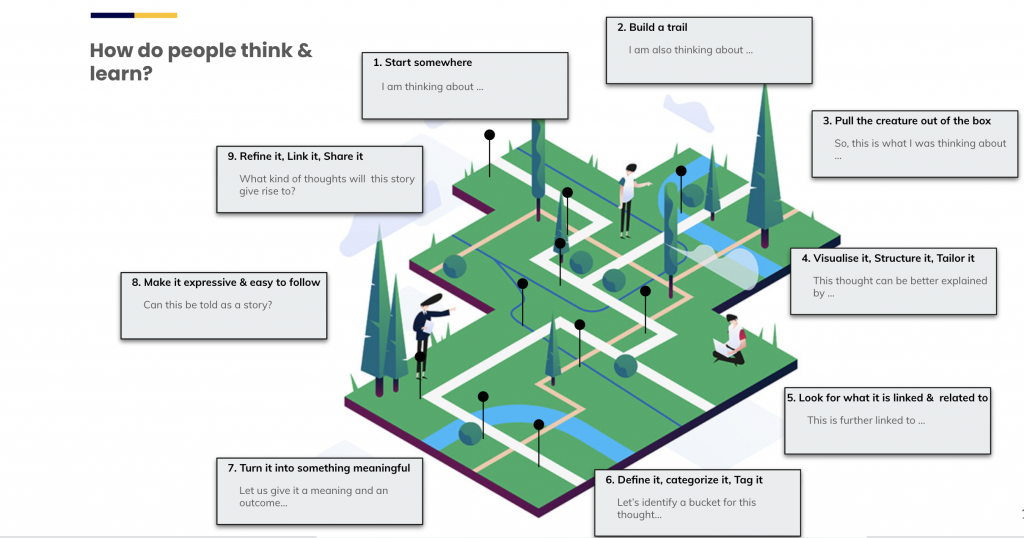
What are the different kinds of learning?
Each one of us go through two kinds of learning metamorphosis; one that prepares them for all the certainties in future; and one that prepares them for times of uncertainty.
Lets understand the nature of these further.
- Supervised and scoped learning: When the outcome of a learning activity is defined; or prescribed to start with so that it would lead to some outcomes; learning is said to be supervised and scoped. Such learning is often guided with some contexts; and may also be prescribed and directed, by the presence of a teacher or a mentor.
- Unsupervised and open learning: Learning things for fun, is mostly unsupervised and free of any learning outcomes at the onset. It is possible that the learner may later assume certain goals to achieve.
Resulting from this, broadly, there are two kinds of learning approaches everyone inculcates in life:
- Self-driven
- Guided
Thought Jumper creates opportunities to do both. When learner’s are able to switch between the two; they transform into
- independent identities with their own views, values and perspectives; and can express themselves
- aware, and compliant, team players; who also value and understand the diversity of the thoughts
What are the different kinds of learning principles Thought Jumper supports?
At Edvanta, we believe, that in order to have a truly functioning learning ecosystem, it is important to create excitement, a passion for learning and therefore value for the individual.
Real learning happens when you connect at an emotional level; create desire and opportunity for personal growth and leverage this to improve your business.
Thought Jumper is built by people who have been designing and building learning products and custom learning solutions for its customers at different levels of cognitive maturity ranging from Higher Education to K12, from technologists to researchers, from startups to enterprises, from direct end consumers to organised eco-systems, including Institutions, Corporate as well as Governments .
- Pedagogy: Applies well to younger students with little understanding or exposure of the learning domain and the topic being learned. For eg: K12, Onboarding and Kickstarter learning experiences.
- Andragogy: Applies well to a mentor-driven collaborative learning environment; especially corporates with manager-driven and manager-approved workflows. It may also be well applied to peer-driven collaborative learning initiatives.
- Heutagogy: Applies well to almost everyone in someway or the other. Each one of us is passionate about something; and explores & learns about it in their own unique way. This is the most under-stated, unaddressed and unresolved problem of all and provides significant returns to a learner. Thought Jumper intends to provide the tools and necessary support for empowering users with their own kinds of thought; aided with what is available in the public domain.
What are the different kinds of use-cases that Thought Jumper supports?
Thought Jumper is our attempt to assimilates all of these experiences and learning principles to make the learning process complete and efficient for different kinds of learners. Thought Jumper supports a variety of these use-cases; some of which we have identified below.
- Learn, Organise & Explore about something(For eg. Digital Marketing)
- Tell a story backed by fact and experiences(For eg. The Russo-Ukrainian War)
- Share your thought process and journey
- Map an existing process(For eg. Work with Px team)
- Turn your journey into a quest(For eg. World war 2)
Thought Jumper has further aided these use-cases with some identified workflows
- Prescribed Consumption: Simplified workflow for pre-created knowledge-graphs
- Author mode: Create notes, thought maps, quests to enrich your thoughts
- Graph exploration: Stay curious. Explore something new.
- Reading: Read a book and collect your thoughts alongside
- Browser friendly: Surf the internet empowered with TJ
- Immersive content: Explore 3d models, VR videos for an immersive experience
- Process Mapping: Create and map your thoughts into processes
